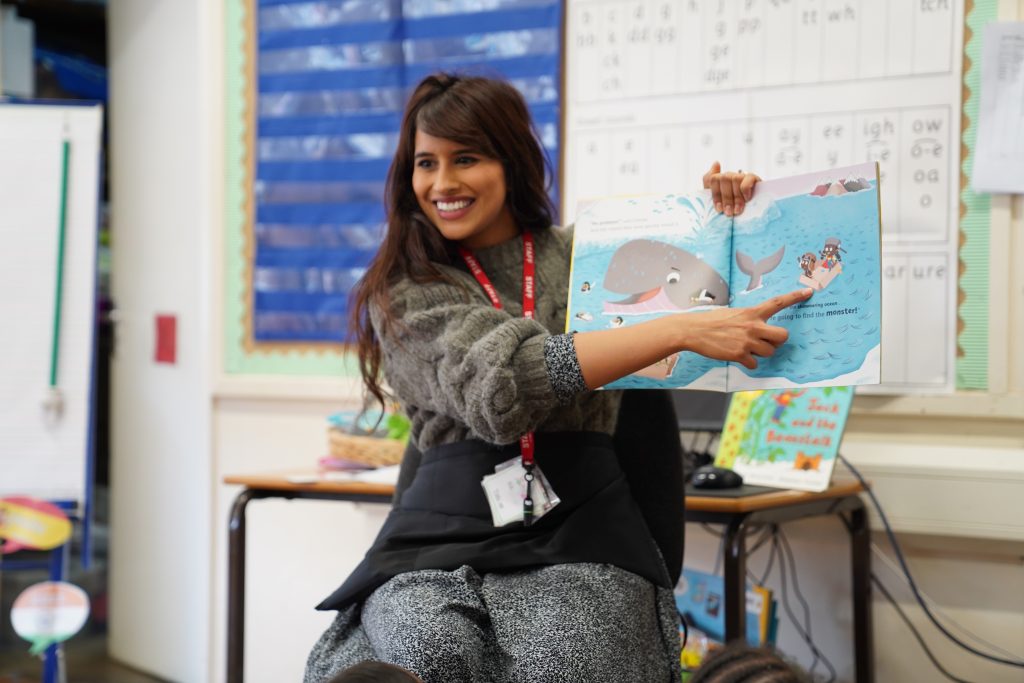As a teacher, in the days when we listened to individual children read, I’d often say, ‘Try to put a bit of expression in your voice.’ But, in fact, what I wanted was for the child to bring the story alive through their reading, to show me that they understood it. If we want children to love what they read, they need to learn how we live the story ourselves.
Here are some of our ideas for the best story times.
Voices
Decide the voice you’re going to use for the narrator.
Then think about the voices you are going to use for the main characters. Is their pitch high or low? Do they speak quickly or slowly? Don’t worry if you can’t do accents. Use the voices you already have:
- your needy ‘Could you make me a cup of tea?’ voice
- your ‘I’m so disappointed in your behaviour ‘voice
- your ‘posh’ interview voice
- your ‘furious’ voice when something goes wrong.
We have a multitude of voices we use regularly. Draw on these when you read aloud.
Pauses
Plan the places where you are going to pause to build anticipation.
Asides
Pick out the asides you plan to use to show your reactions to particular events. Maybe try out some facial expressions.
Identify individual words that might be unfamiliar – although not too many of these, because you do not want to interrupt the flow of the story to give explanations. However, a quick aside – ‘“leapt” – that’s a big jump’ – can be helpful.
You might also think about colouring a word with your voice: you might ‘wail’ or use an action to support their understanding.
Memorable words and phrases
Look for the most memorable words and phrases, the ones the children are going to say with you, the ones they are going to love, remember and return to. These will feed into their vocabulary, increasing their comprehension and enriching their writing, too.
Practise
Practise reading aloud, using what you have already planned. By the time you read to the class, you should be very familiar with the story. You will be willing the children to love it as much as you do.
Anticipation
Before story time, build up the children’s anticipation through the day. Say things such as: ‘Today, I’ve got a new story by … ‘; ‘I’m going to read later’; ‘I don’t want anyone looking into my drawer for the new book.’
When you are ready, check that they can all see your face and the illustrations in the book easily. Make sure they’re comfortable. Seat the wrigglers near you, but not too close, because you need to hold their eyes with yours and gain their attention. Tell them the name of the author… and reveal the title.
During story time, never ask them to predict what might happen or ask questions: you want the story to weave its magic.
Action: Live the story
- Decide the voices
- Plan the pauses
- Plan the asides – to explain meaning and words
- Pick out the memorable phrases.
PRACTISE!

